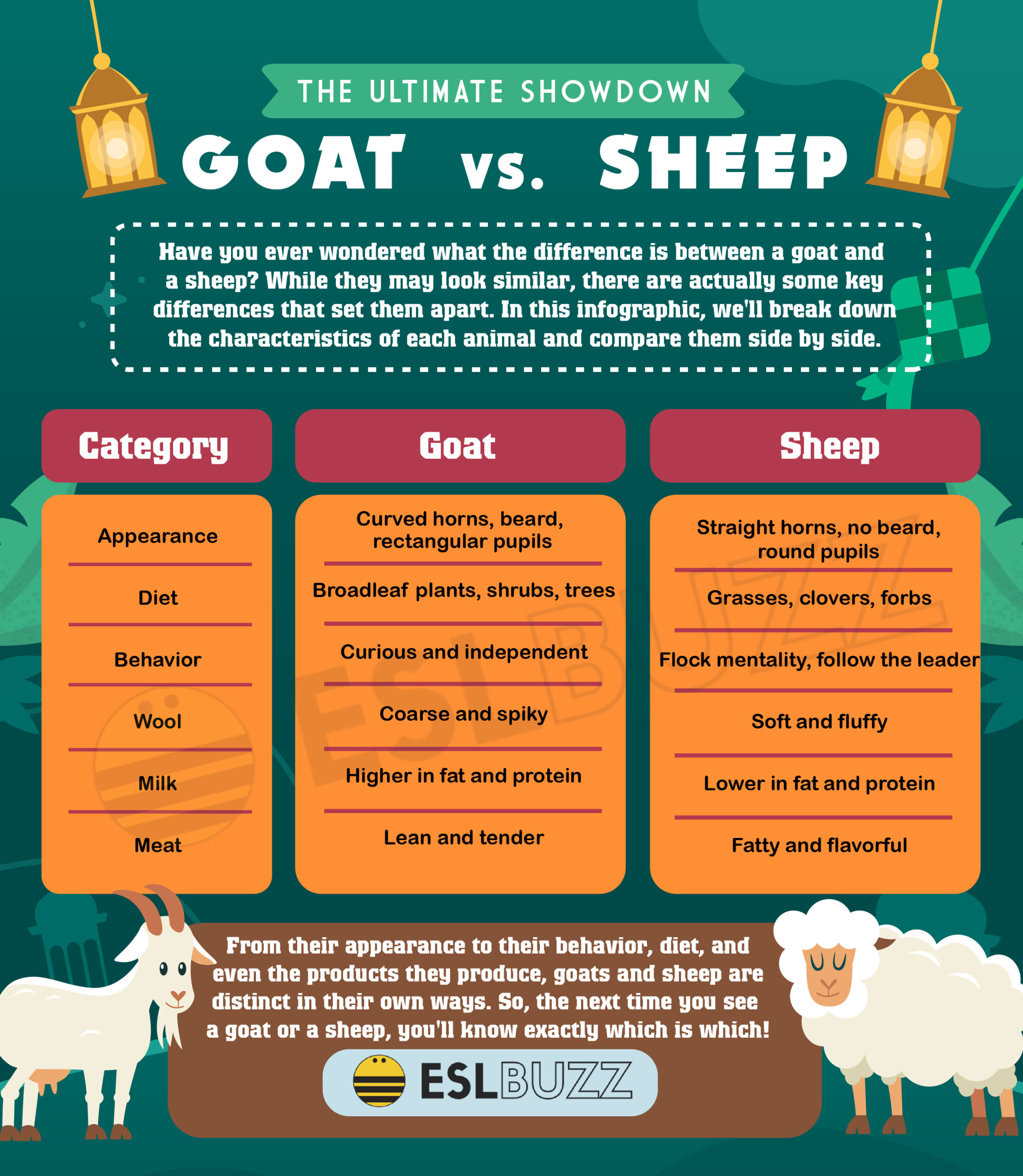Sheep vs Lamb vs Goat: Understanding Their Differences
List:
1. Sheep
2. Lambs
3. Goats
4. Animal family Bovidae
5. Subfamily Caprinae
6. Genus Capra
7. Genus Ovis
8. Mouflons
9. Wool
10. Leather
11. Meat
12. Red meat
13. Hogget/mutton
14. Delicacy
15. Middle East
16. Cholesterol levels
17. Iron
18. Potassium
19. Colors of goat meat
20. Goatskin
21. Lambskin
22. Goat leather
23. Lamb leather
24. Marbling of fat
25. Insulation
26. Immunity
27. Saturated fats
28. Flavor
29. Texture
30. Aged goat
31. Sweeter flavor
32. Gamey flavor
33. Gamier flavor
34. Human history

